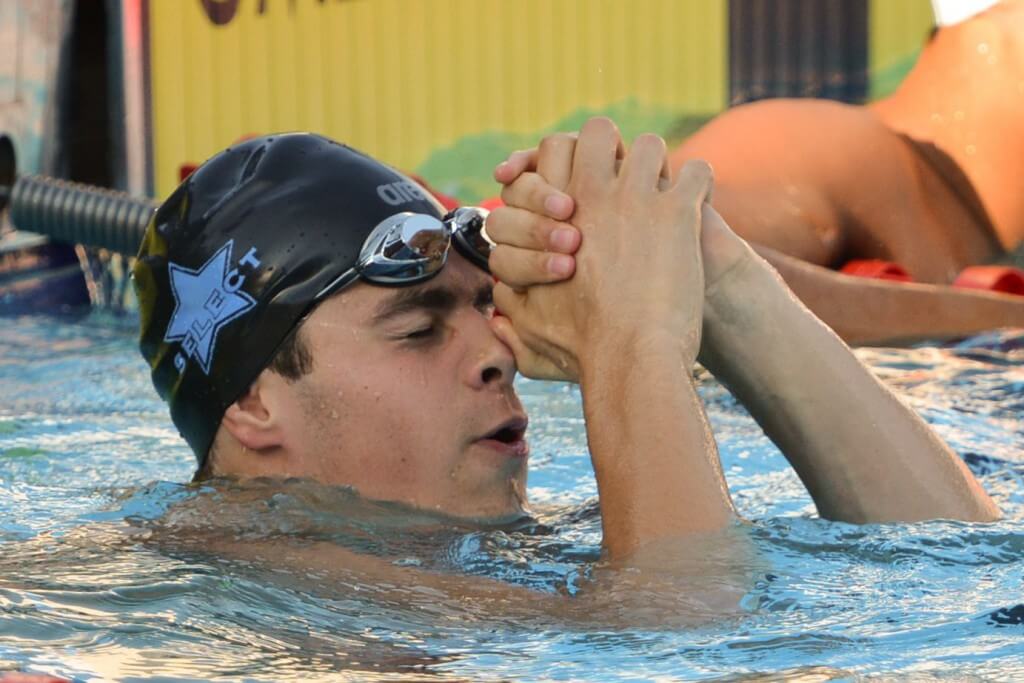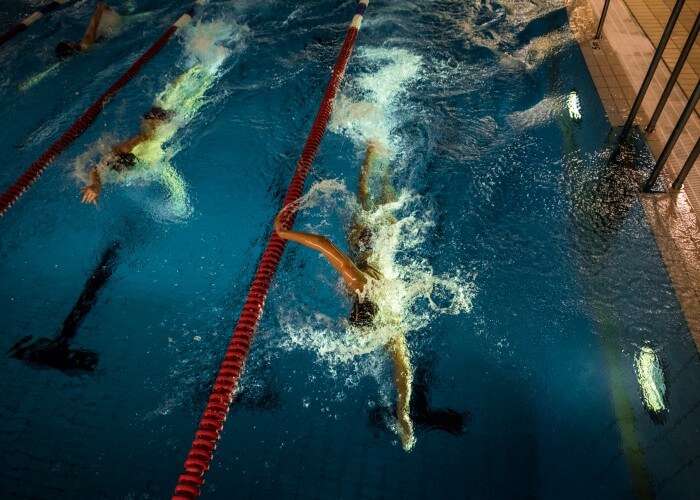What is the Ultimate Swim Training Plan?

By Kristy Kinzer, Swimming World College Intern.
Swim training programs for colleges greatly vary between divisions, conferences, and coaches. Several yield positive results, yet many coaches, new and experienced alike, are left scratching their heads about which methods to incorporate and which to scrap to stay competitive. New studies have spurred innovative training strategies nation-wide that undermine the strong tradition of high volume, yardage-based programs. But which training style is the most effective for athletes to accomplish their lofty goals?
Traditional Swim Training
If you’ve been involved in competitive swimming for a few years, you may notice a pattern that follows the traditional training approach. Swimmers from these programs are generally extremely physically tough and have endured many high-volume, lengthy aerobic practices. Their physical fitness is higher than the average Joe, and these athletes have the confidence boost of knowing they’ve trained harder than most of their competitors. A typical limiting factor to specific training on these teams is the coach-to-swimmer ratio; thus, high-volume practices are trusty safety-blankets to off-set lack of specificity.
Progressive Approach
More recently in the world of swimming, a form of training has caught fire with those edgy coaches willing to change training methods to produce different results. This “less-is-more” training strategy is geared toward highly specific, race-pace workouts designed to train with the same race speed and stroke mechanics that the athlete will need to perform at the highest level. Though coaches all over the world have been using versions of high velocity workouts throughout the decades, more defined and scientifically-sound training methods have emerged. Examples include ultra short-rest race pace training (USRPT) involving maximal efforts with short rest but allows for recovery and technical training, high-intensity training (HIT) using maximum efforts with long rest, and high-intensity interval training (HIIT) utilizing maximum effort with short rest. Michael Andrew, 18-year-old swimming phenom, adopted USRPT training and has broken over 78 National Age Group records.
“Research shows that swimmers who train at higher intensities during practice have significantly greater improvements during races than swimmers training at slower speeds,” Dr. Brent Rushall (the founder of USRPT) of San Diego State, claims.
This “less-is-more” philosophy poses the question, “Why add more stress and fatigue with a long workout when your main focus is improving your shorter bursts of race-length swimming?” Typically, the risks of illness and injury from fatigue go out the window with this training. Never underestimate the power of a rested, focused mind.
Dark Sides of Both
While the traditional approach usually yields more fit athletes, the progressive approach yields race-horses ready for high results. In the end, athletes and coaches must evaluate their goals and decide what type of “fitness” they intend to achieve faster speeds, calling into question quality versus quantity of workouts.
Injuries can happen to anyone; however, your chances of having an overall healthy athlete is more likely with less yardage and time in the pool or weight room. One might argue that once an athlete adjusts to high levels of conditioning, he or she has the same risk of injury as one with adjusted to lower volumes. The human body is highly adaptable.
Countless mind-numbing yards can have the effect of disengagement and boredom with traditional swimming; however, the expectation of total engagement, motivation and focus for each practice may be far from realistic with the progressive approach.
Training specificity with progressive coaching styles may be difficult to implement with low staff and high volumes of athletes, but volume-focused programs are not a catch-all in improving speed. They do not always emphasize the intangibles of competitive athletics in mental toughness, technique work, nutrition, and recovery.
Many coaches and trainers call into question the actual science behind new fads in training, such as USRPT.
“I think USRPT users will eventually have a hard time actually getting faster,” Eric McGinnis, Rollins College’s strength and conditioning coach and sports performance specialist said. “The program really only focuses on maintaining speed, not building it. Without the use of training equipment, strength training, or front-end speed work on maximal rest, it’s going to eventually become challenging to get faster. Modern-day resistance training is far more advanced than the research articles backing USRPT.”
The Spectrum

Photo Courtesy: Robin Sparf
Unfortunately, it appears that the best way to test these methods is through trial and error. Many amateur athletes do not possess the skills to read their own bodies and know what kind of training produces the best results. This is where the coach-athlete dynamic comes into play— coaches must have strong communication skills, which includes being a great listener and observer first and foremost. A partnership between the coach and athletes will result in higher trust and accountability, which will translate into better training and more confident racing.
For those swimmers who respond well to traditional training, you’ll have just as many who benefit greatly from non-traditional methods. How do coaches deal with this discrepancy? They must emphasize the “how” of training over the “what” of training. Swimming with proper body mechanics, stroke technique, and focus will yield a better swimmer than swimming long yards with poor head control, core body position, and poor body mechanics regardless of speed.
The Solution
After speaking with a variety of coaches from different backgrounds, one theme weaved through each of their stories. Choose a training program, believe in it, and get the athletes to buy in. Be flexible and listen to your athletes, and focus on quality yardage.
“Every time an athlete trains, he or she is developing muscular and neurological memory,” Coach Sullivan said. “The problem is that many swimmers spend too much time developing a technique that they will never use when they race. It’s high-speed stroke technique that is most beneficial and probably gets the least amount of attention.”
Whether a program functions on one end of the spectrum versus the other, athletes must move through the water with the least body resistance possible with the highest sustained power possible. Balancing training with specificity, intensity, and volume is the key to best performance.
This long-term, cyclical training structure is called “periodization.” The goal of this training is to maximize performance while keeping the athlete mentally and physically engaged, injury-free, and to incorporate the best aspects of both traditional and progressive training methods.
Head coach of Calvin College’s swim and dive program, Dan Gelderloos, gives his opinion on types and lengths of workouts:
“I am not against long sets that accumulate a lot of yards in the right situation with the right group of swimmers– but it has to be accomplishing your goal, not just trying to swim far. I believe that you need to get your team to swim really well for 30 minutes before you extend it to 60 minutes or beyond versus the other way around. Katie Ledecky and Michael Phelps have done some amazing workouts with impressive numbers, but they’re also doing them extremely fast with great technique. Get your team swimming very fast and well first, then extend the yardage as their ability takes them.”
As it seems, the more years of coaching and yardage under an athlete’s belt, the better the athlete and team’s performance. Many new training methods have not been studied in-depth over several seasons of racing versus the tried-and-true programs incorporating traditional training values.
The conversation of determining the most effective training methods has reached no conclusion—rather, it has only recently begun. With no clear-cut rules, the magic training plan may not exist after all.
All commentaries are the opinion of the author and do not necessarily reflect the views of Swimming World Magazine nor its staff.




This is a great article. I learned a lot! Thanks!
Fausto Penagos
Love the first paragraph of solution.
I usually end my long yardages with some sprints. My body is warmed up and I am ready to give it 100%.